Mastering the basics: A guide to maintaining your luthier instrument
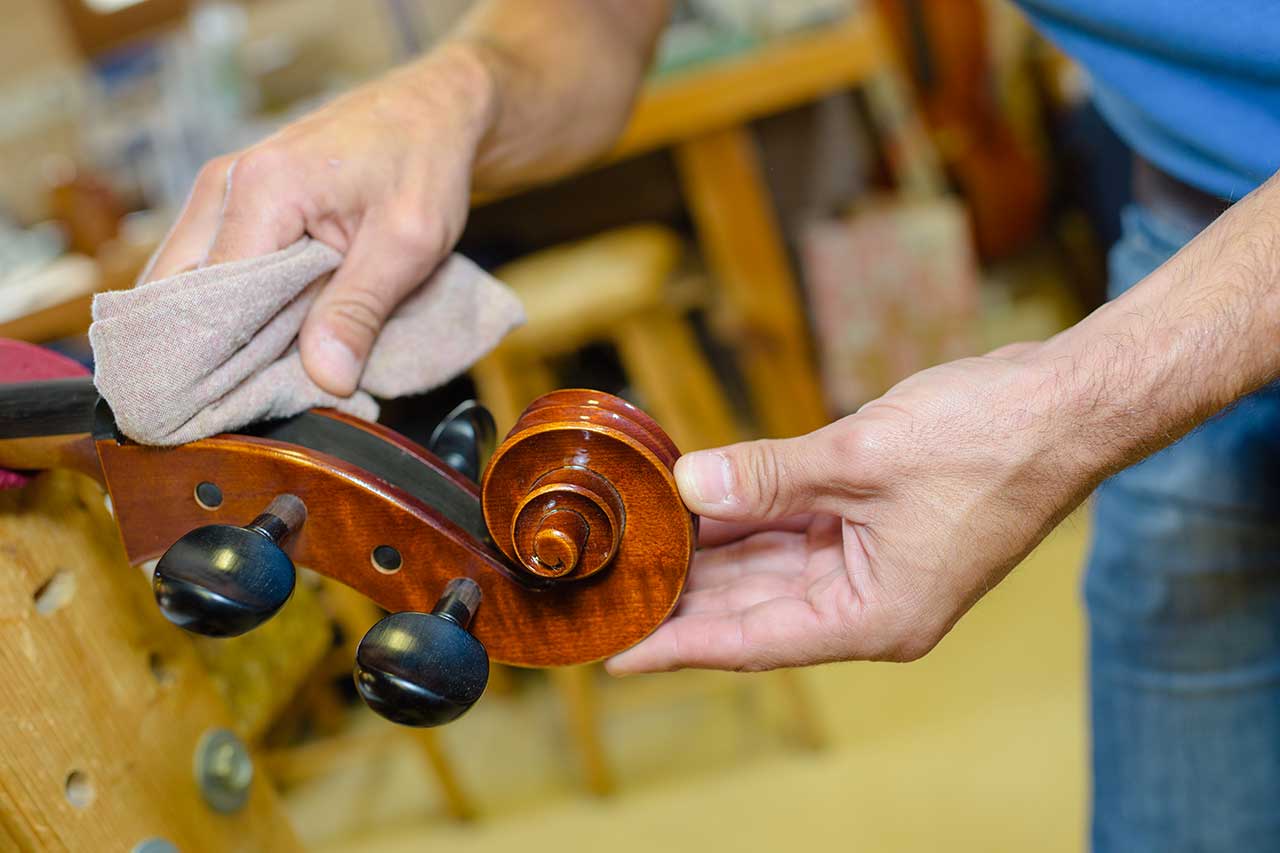
Mastering the basics: A guide to maintaining your luthier instrument
Mastering the basics: A guide to maintaining your luthier instrument – Why regular maintenance is crucial for the longevity of your luthier instrument
As a luthier instrument owner, it is essential to understand the importance of regular maintenance in order to prolong the life of your instrument. Luthier instruments, such as guitars and violins, are delicate and intricate pieces of art that require proper care to function at their best. Neglecting regular maintenance can lead to costly repairs and even render your instrument unplayable.
One of the most important aspects of regular maintenance is tuning and string replacement. The tension of the strings on a luthier instrument can cause wear and tear on the instrument over time. It is important to regularly check and adjust the tuning of your instrument to ensure it is in optimal playing condition. Additionally, the strings on your instrument should be replaced as needed, as they can become worn or frayed, which can negatively impact the sound and playability of your instrument.
Another crucial aspect of regular maintenance is a professional setup. This includes adjusting the action, intonation, and overall playability of your instrument. A professional setup can help ensure your instrument is easy to play and produces the best sound possible. This can also prevent issues such as fret buzz or difficulty pressing down on the strings.
Proper cleaning and care for the wood of your instrument is also essential. Luthier instruments are made of wood, which can be affected by changes in humidity and temperature. It is important to regularly clean your instrument to remove dirt and grime, and to use a humidifier if necessary to maintain the proper humidity level for the wood.
In addition to these regular maintenance tasks, it is also important to have your luthier instrument inspected by a professional luthier on a regular basis. This can help identify and fix any potential issues before they become major problems.
To sum up, regular maintenance is crucial for the longevity of your luthier instrument. It will help you to prevent costly repairs and ensure that your instrument is always in optimal playing condition. It is important to regularly check and adjust the tuning, replace the strings, have a professional setup, clean and care for the wood, and have regular inspections by a professional luthier. By investing the time and effort into regular maintenance, you can enjoy your luthier instrument for many years to come.

The importance of proper tuning and string replacement for luthier instruments
Proper tuning and string replacement are crucial for maintaining the optimal sound and playability of your luthier instrument. Whether you own a guitar or a violin, keeping the instrument in good condition is essential for ensuring that it will last for many years to come.
Tuning is critical for the overall sound of your instrument. The tension of the strings can cause wear and tear on the instrument over time. It is important to regularly check and adjust the tuning of your instrument to ensure it is in optimal playing condition. A well-tuned instrument will produce a clear and harmonious sound, making it a pleasure to play and listen to. By neglecting the tuning, you can cause damage to the instrument and make it harder to play.
String replacement is also an essential aspect of regular maintenance for your luthier instrument. Strings can become worn or frayed over time, which can negatively impact the sound and playability of your instrument. It is important to replace your strings as needed to ensure that your instrument is always producing the best sound possible. A good rule of thumb is to change the strings every 3-6 months depending on how frequently you play and the quality of the strings.
When choosing the strings, it’s important to consider the type of music you play and the sound you’re trying to achieve. The type of strings you use can have a big impact on the sound and feel of your instrument. For example, if you play classical music, you might prefer gut or synthetic gut strings, while if you play rock or blues, you might prefer steel or nickel-plated steel strings. Also, the gauge of the strings is important, thinner strings are easier to play but less durable, thicker strings are harder to play but last longer.
In conclusion, proper tuning and string replacement are crucial for maintaining the optimal sound and playability of your luthier instrument. Neglecting these tasks can lead to costly repairs and render your instrument unplayable. Regularly check and adjust the tuning, and replace the strings as needed. Investing the time and effort into proper tuning and string replacement can ensure that your luthier instrument will last for many years to come and will always sound its best.
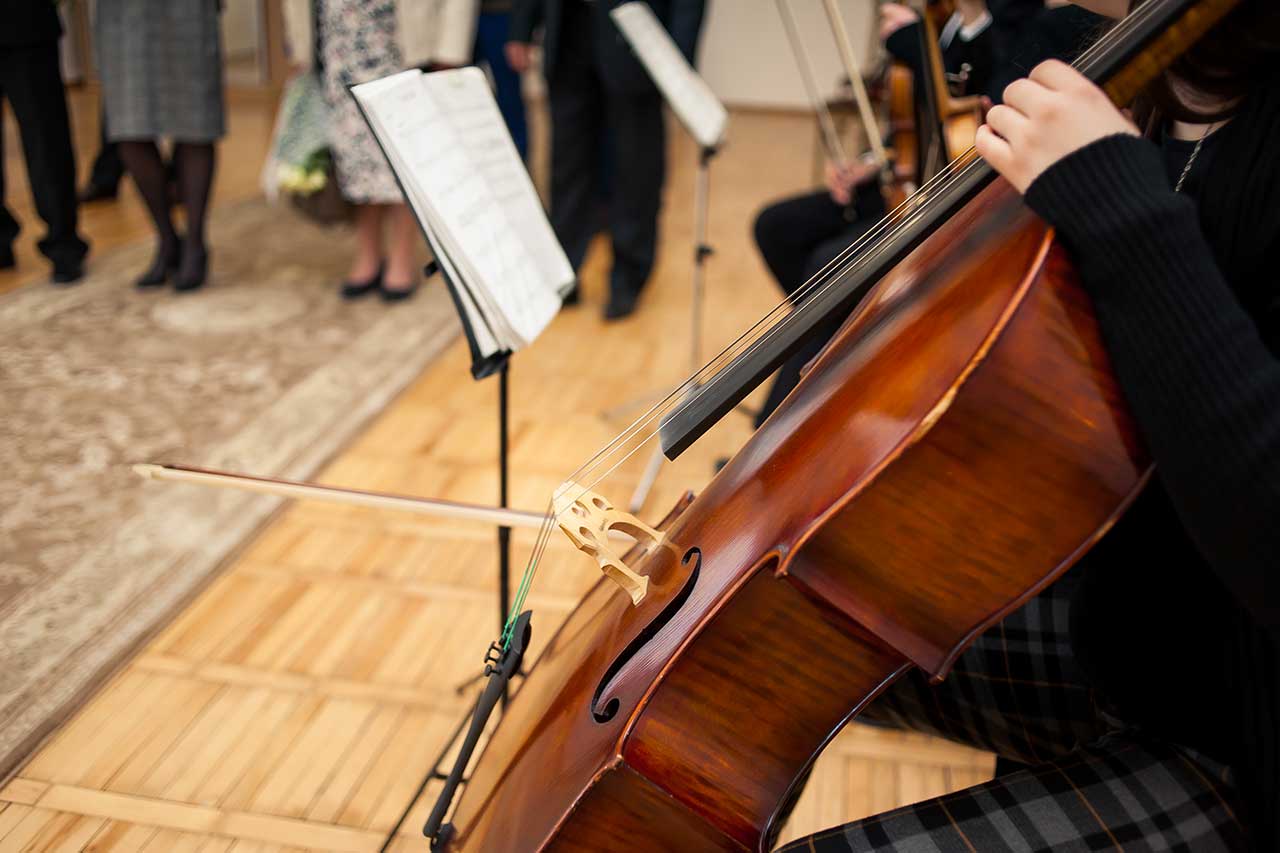
Mastering the basics: A guide to maintaining your luthier instrument – The benefits of a professional setup for your luthier guitar or violin
A professional setup is an essential aspect of maintaining your luthier guitar or violin. It is a process in which a skilled luthier adjusts the action, intonation, and overall playability of your instrument to ensure it is in optimal playing condition. A professional setup can help to prevent issues such as fret buzz or difficulty pressing down on the strings, and can improve the overall sound and playability of your instrument.
One of the main benefits of a professional setup is that it helps to improve the action of your instrument. Action refers to the distance between the strings and the frets, and it is an important factor in the playability of your instrument. A high action can make it difficult to press down on the strings, while a low action can cause fret buzz. A professional setup will ensure that the action is set to the appropriate level for your playing style and preferences.
Another benefit of a professional setup is that it improves the intonation of your instrument. Intonation refers to the accuracy of the pitch of the notes played on your instrument. A poorly intonated instrument will sound out of tune, even when it is properly tuned. A professional setup will ensure that your instrument is properly intonated, which will improve the overall sound and playability of your instrument.
A professional setup can also help to improve the overall playability of your instrument. This includes adjusting the height of the strings, the angle of the nut and the bridge, the curvature of the fingerboard and other adjustments that can make a big difference in how the instrument feels and sounds.
One more benefit of a professional setup is that it can help to prevent issues such as fret wear, which can cause difficulty playing and poor sound quality. A professional setup will ensure that your instrument is set up correctly, which can prevent issues such as fret wear and prolong the life of your instrument.
To sum up, a professional setup is an essential aspect of maintaining your luthier guitar or violin. It can help to improve the action, intonation, playability, and overall sound of your instrument. It also can prevent issues such as fret wear and prolong the life of your instrument. It’s important to have your instrument professionally set up on a regular basis, especially if you play your instrument frequently or if you notice any issues with the playability of your instrument. A professional setup can help to ensure that your instrument is always in optimal playing condition, and that you can enjoy it for many years to come.
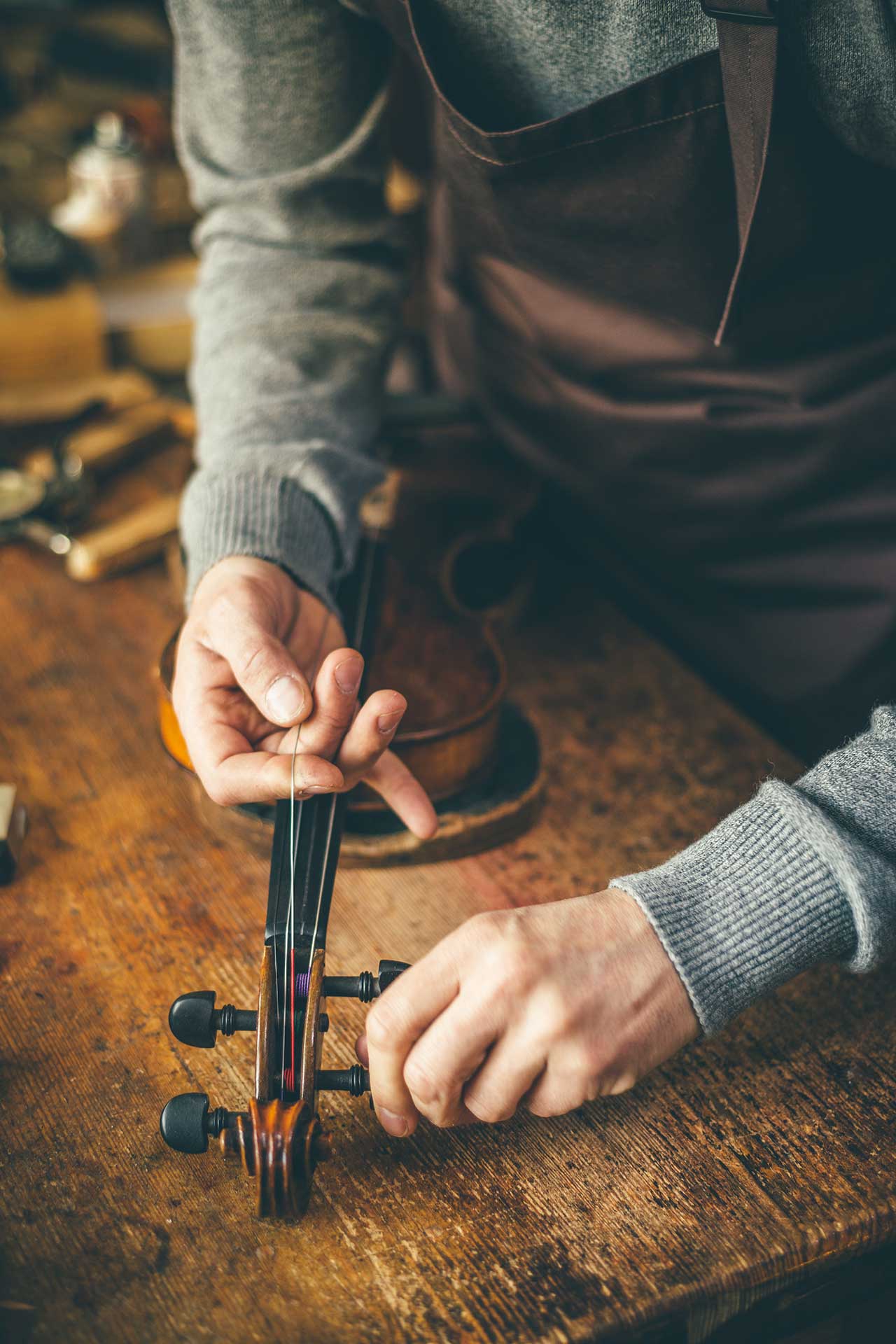
How to clean and care for the wood on your luthier instrument
Cleaning and caring for the wood on your luthier instrument is essential for ensuring that it lasts for many years to come. Luthier instruments, such as guitars and violins, are made of wood, which can be affected by changes in humidity and temperature. Proper cleaning and care can help to protect the wood and ensure that your instrument is always in optimal condition.
One of the most important things you can do to clean and care for the wood on your luthier instrument is to regularly dust and wipe it down. Use a soft, dry cloth to gently wipe down the body, neck, and headstock of your instrument. This will remove any dust or dirt that has accumulated, and will help to keep the wood looking shiny and new.
It’s also important to be mindful of the humidity levels when storing your luthier instrument. Wood can be affected by changes in humidity, and too much or too little humidity can cause the wood to crack, warp, or change shape. To maintain the proper humidity level, you can use a humidifier, or a hygrometer to measure the humidity level. The ideal humidity level is between 40% and 50%, and if you notice that the humidity level is too low, you can use a humidifier to add moisture to the air.
Another way to take care of the wood on your luthier instrument is to use a cleaning solution that is specifically designed for wood instruments. These solutions are formulated to gently clean and protect the wood, without causing damage. When using a cleaning solution, be sure to follow the instructions on the label, and use a soft, dry cloth to apply the solution.
It’s also important to handle your luthier instrument with care, and avoid exposing it to extreme temperatures or direct sunlight, as these can cause the wood to warp or crack. Additionally, avoid storing your instrument in a damp or humid place, as this can lead to mold or mildew growth.
In conclusion, cleaning and caring for the wood on your luthier instrument is essential for ensuring that it lasts for many years to come. It’s important to regularly dust and wipe down your instrument, be mindful of the humidity levels when storing it, use a cleaning solution specifically designed for wood instruments and handle it with care. By taking the time to properly clean and care for the wood on your luthier instrument, you can ensure that it always looks and sounds its best.
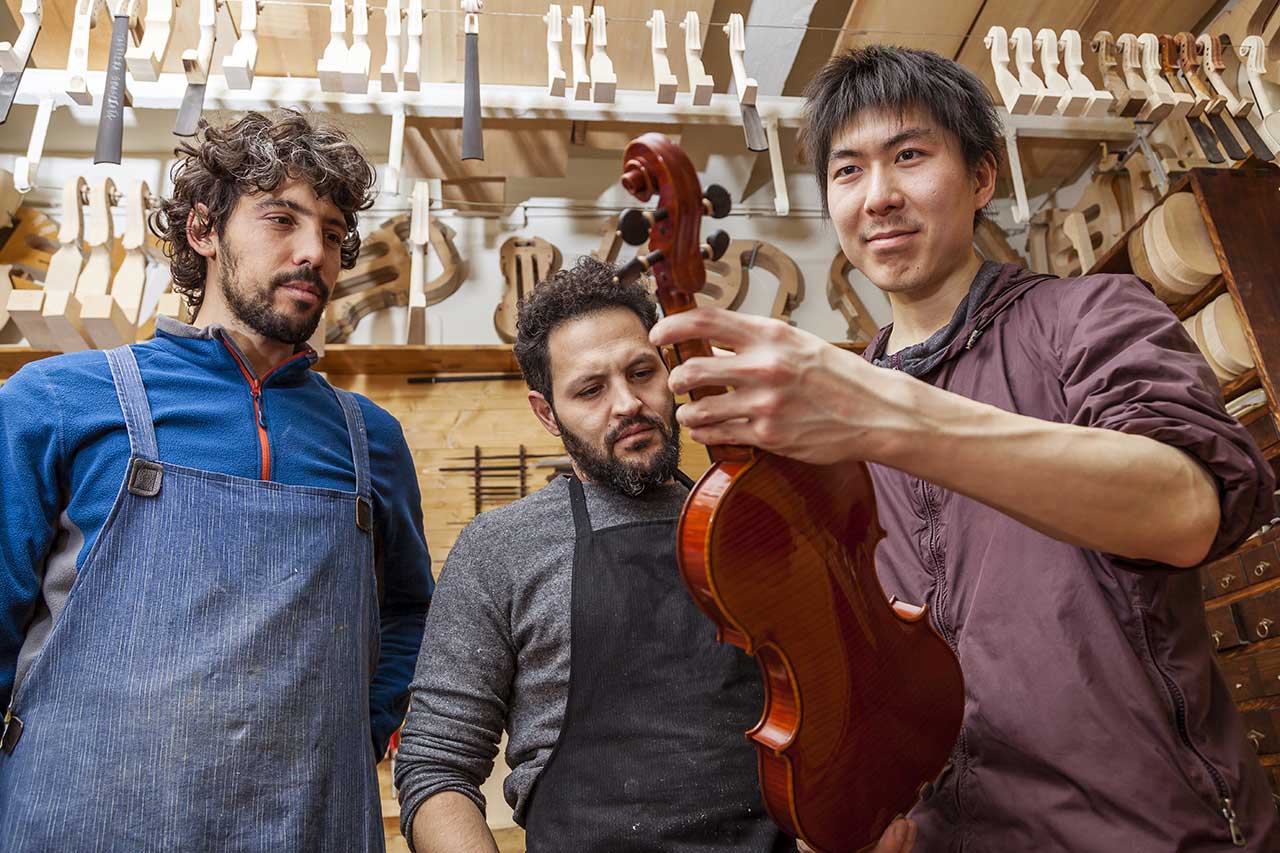
The role of humidity in maintaining your luthier instrument
The humidity level is a vital aspect in keeping your luthier instrument in top shape. Luthier instruments, like guitars and violins, are constructed of wood, which is susceptible to variations in humidity and temperature. Keeping the humidity level at the right balance can aid in preserving the wood and ensuring that your instrument is always in ideal condition.
When the humidity levels are too low, the wood on your instrument can become dry, which can cause it to crack or warp. Low humidity can also cause the glue joints on your instrument to weaken, which can lead to structural issues. On the other hand, when the humidity levels are too high, the wood can become swollen, which can cause the instrument to lose its shape and affect the playability of your instrument.
To maintain the proper humidity levels for your luthier instrument, it’s important to use a hygrometer to measure the humidity level. The ideal humidity level is between 40% and 50%. If the humidity level is too low, you can use a humidifier to add moisture to the air. If the humidity level is too high, you can use a dehumidifier to remove excess moisture.
It’s also important to be mindful of the humidity levels when storing your luthier instrument. Avoid storing your instrument in a damp or humid place, as this can lead to mold or mildew growth. Instead, store your instrument in a case, in a dry and cool place. Also, avoid exposing your instrument to extreme temperatures or direct sunlight, as these can cause the wood to warp or crack.
It’s also important to note that the humidity level can change depending on the season, it’s important to check the humidity level and adjust it accordingly. You can also use humidifiers or dehumidifiers to maintain the ideal humidity level in your home.
To sum up, humidity plays a crucial role in maintaining the optimal condition of your luthier instrument. Proper humidity levels can help to protect the wood and ensure that your instrument is always in optimal condition. Use a hygrometer to measure the humidity level, use a humidifier or dehumidifier if necessary, be mindful of the humidity levels when storing your instrument, and avoid exposing it to extreme temperatures or direct sunlight. By being aware of the role of humidity in maintaining your luthier instrument, you can ensure that your instrument always looks and sounds its best.
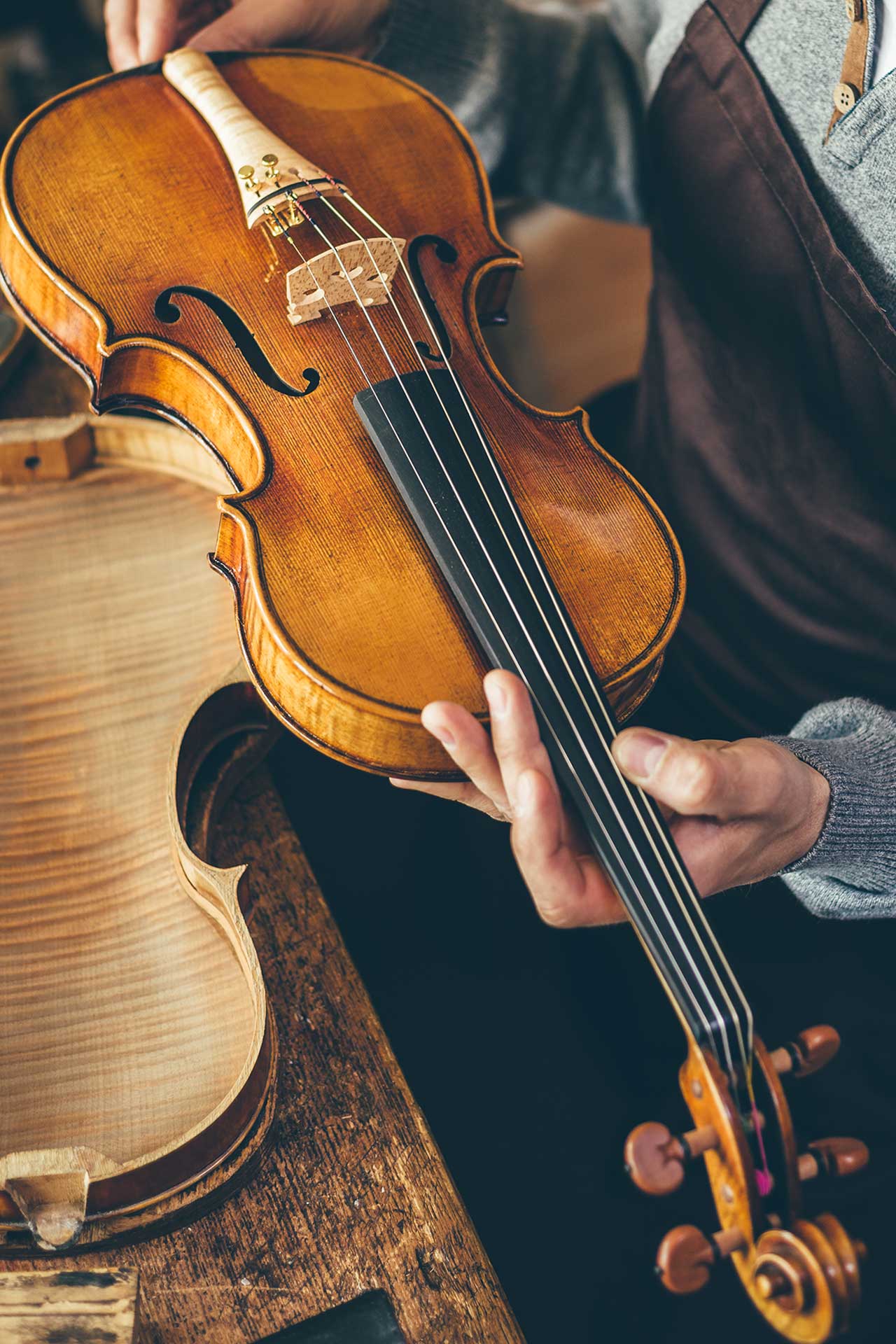
Mastering the basics: A guide to maintaining your luthier instrument – The importance of proper storage for your luthier instrument
Proper storage of your luthier instrument is essential for ensuring that it lasts for many years to come. Luthier instruments, such as guitars and violins, are delicate and intricate pieces of art that require proper care to function at their best. Neglecting proper storage can lead to costly repairs and even render your instrument unplayable.
One of the most important aspects of proper storage is to keep your instrument in a hardshell case when not in use. A hardshell case will protect your instrument from scratches, dings, and other forms of damage. It will also protect it from extreme temperatures, humidity and direct sunlight.
It’s also important to store your instrument in a cool, dry place. Avoid storing your instrument in a damp or humid place, as this can lead to mold or mildew growth. Also, avoid exposing your instrument to extreme temperatures or direct sunlight, as these can cause the wood to warp or crack.
Another aspect of proper storage is to make sure that your instrument is properly secured inside the case. This includes securing the strings, the tuning machines, and the bridge. This will help to prevent any damage from movement inside the case and will also prevent the strings from going out of tune.
When travelling with your instrument, it’s important to use a flight case that is specifically designed for luthier instruments.

Mastering the basics: A guide to maintaining your luthier instrument – How to identify and fix common issues with luthier instruments
Luthier instruments, such as guitars and violins, are delicate and intricate pieces of art that require proper care and maintenance to function at their best. Over time, even the most well-cared for instruments can develop issues that can affect their sound and playability. By understanding how to identify and fix common issues, you can keep your instrument in top condition and ensure that it always sounds and plays its best.
One of the most common issues with luthier instruments is fret buzz. Fret buzz occurs when the strings vibrate against the frets, causing a buzzing or humming sound. This can be caused by a number of factors, including high action, worn frets, or a twisted neck. To fix fret buzz, you will need to adjust the action, replace worn frets, or have a professional repair the neck.
Another common issue with luthier instruments is a loose or broken bridge. The bridge is the piece of wood that holds the strings in place, and it can become loose or even break if the instrument is dropped or bumped. A loose or broken bridge can cause the instrument to be out of tune, and it can also affect the overall sound of the instrument. To fix a loose or broken bridge, you will need to have it re-glued or replaced by a professional luthier.
A third common issue is a loose or broken tuning machine. The tuning machines are the small knobs or gears that are used to tune the strings. A loose or broken tuning machine can make it difficult to keep the instrument in tune, and it can also affect the overall sound of the instrument. To fix a loose or broken tuning machine, you will need to have it tightened or replaced by a professional luthier.
Other common issues with luthier instruments include a twisted neck, loose or broken strings, and a cracked or warped body. These issues can be caused by changes in temperature and humidity, as well as by poor handling and storage. To fix these issues, you will need to have them repaired or replaced by a professional luthier.
In conclusion, luthier instruments, such as guitars and violins, require proper care and maintenance to function at their best. By understanding how to identify and fix common issues, you can keep your instrument in top condition and ensure that it always sounds and plays its best. When dealing with these issues, it’s important to consult with a professional luthier to guarantee the best repair and maintenance for your instrument.
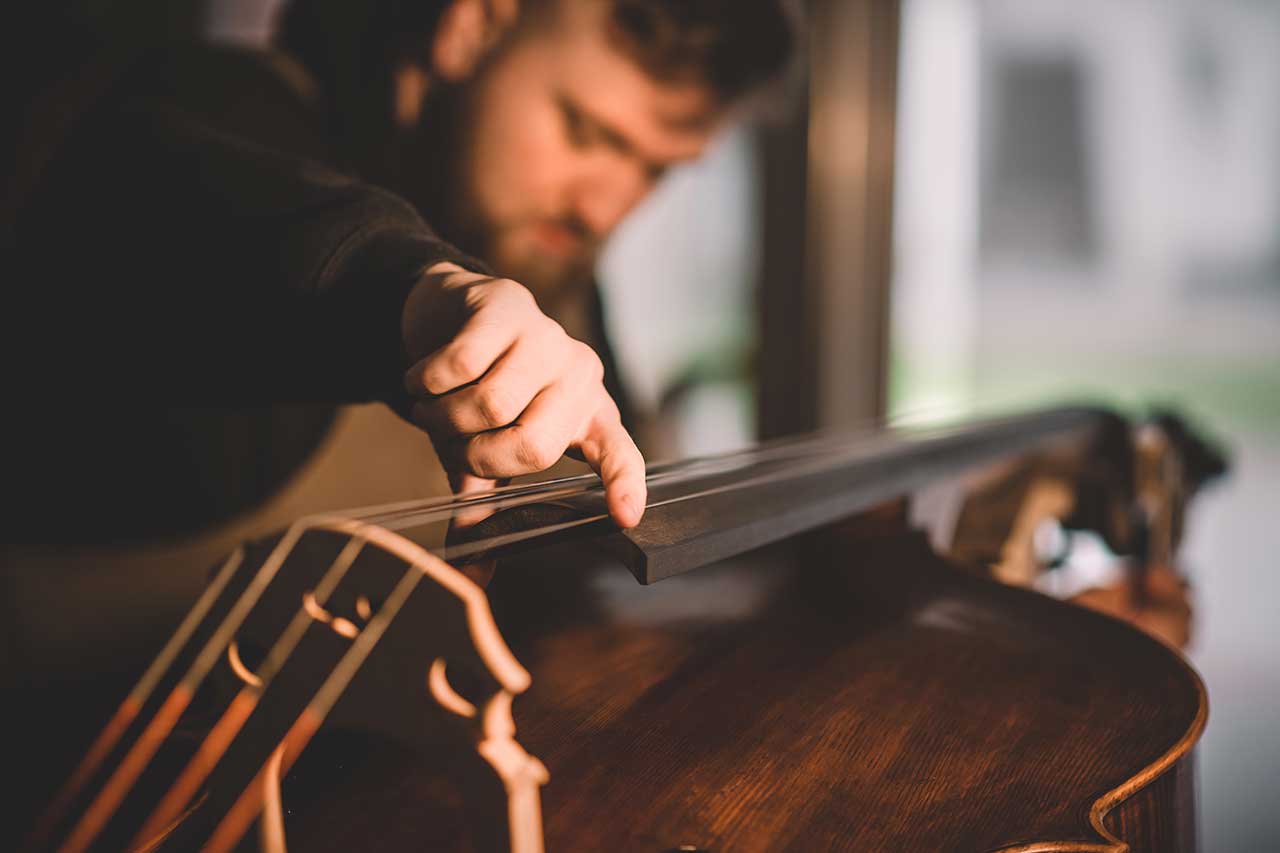
Mastering the basics: A guide to maintaining your luthier instrument – The benefits of regular inspections by a luthier
Regular inspections by a luthier can help to ensure that your luthier instrument is always in optimal condition and can prolong the life of your instrument. Luthier instruments, such as guitars and violins, are delicate and intricate pieces of art that require proper care and maintenance to function at their best. A luthier is a skilled professional who is trained to identify and fix issues with luthier instruments.
One of the main benefits of regular inspections by a luthier is that they can identify and fix potential issues before they become major problems. A luthier can inspect your instrument for issues such as fret wear, loose or broken parts, and structural issues. By identifying these issues early, a luthier can fix them before they cause costly repairs or even render your instrument unplayable.
Another benefit of regular inspections by a luthier is that they can ensure that your instrument is always in optimal playing condition. A luthier can adjust the action, intonation, and overall playability of your instrument to ensure that it is always easy to play and produces the best sound possible. This can help to improve your playing experience and make it more enjoyable.
Regular inspections by a luthier can also help to prevent issues such as changes in humidity and temperature. Luthier instruments are made of wood, which can be affected by changes in humidity and temperature. A luthier can check the humidity level and make adjustments as needed to ensure that your instrument is always protected from these changes.
Regular inspections by a luthier can also help to ensure that your instrument is properly set up and adjusted for your playing style and preferences. A luthier can adjust the height of the strings, the angle of the nut and the bridge, the curvature of the fingerboard and other adjustments that can make a big difference in how the instrument feels and sounds.
To sum up, regular inspections by a luthier can help to ensure that your luthier instrument is always in optimal condition, prolong the life of your instrument, and improve your playing experience. A luthier can identify and fix potential issues, ensure that your instrument is always in optimal playing condition, prevent issues caused by changes in humidity and temperature and adjust the instrument to your playing style and preferences. It’s important to have your instrument inspected by a luthier regularly, especially if you play your instrument frequently or if you notice any issues with the playability of your instrument.
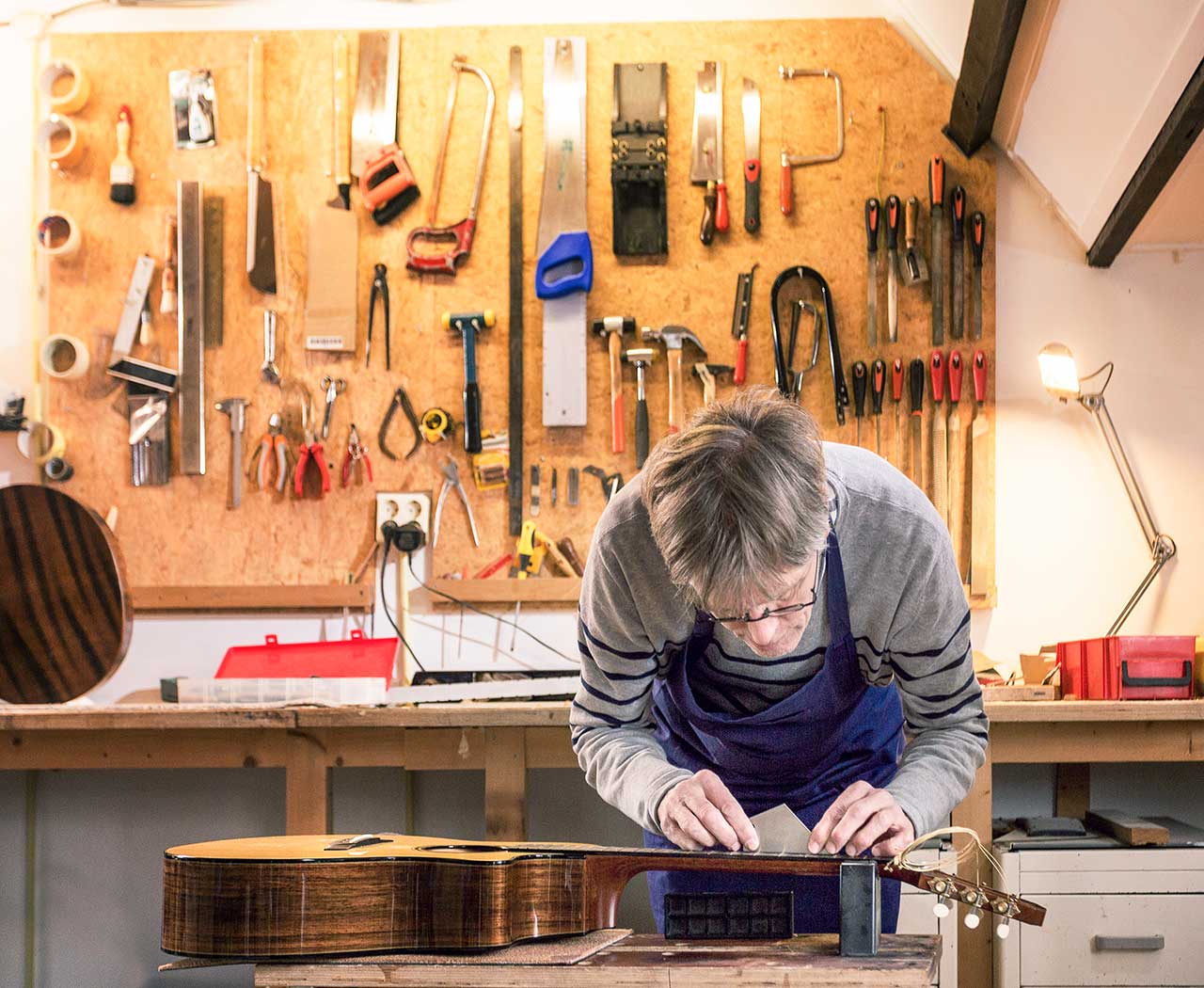
Mastering the basics: A guide to maintaining your luthier instrument – DIY vs professional maintenance: when to seek the help of a luthier
Maintaining a luthier instrument can be a challenging task, and it’s important to know when to seek the help of a professional luthier. While some maintenance tasks can be done at home, others are best left to the experts. Understanding the difference between DIY maintenance and professional maintenance can help you make the best decision for your instrument.
DIY maintenance tasks include simple cleaning and polishing of the instrument, adjusting the tuning and replacing strings. These tasks do not require specialized knowledge or tools and can be done easily by the owner. However, when it comes to more complex issues such as a loose or broken bridge, a twisted neck, or a cracked or warped body, it’s best to seek the help of a professional luthier. These types of issues require specialized knowledge and tools to repair correctly, and attempting to fix them yourself can cause more damage to the instrument.
Another important factor to consider is the value of your instrument. If you own a high-end or vintage luthier instrument, it’s best to leave all maintenance tasks to a professional luthier. These instruments are worth a significant amount of money and require specialized knowledge and care to ensure they are properly maintained and remain in good condition.
A professional luthier can also help you with regular inspections, which can help to identify potential issues before they become major problems. They can also help to ensure that your instrument is always in optimal playing condition, and that it is properly set up and adjusted for your playing style and preferences.
In conclusion, while some maintenance tasks can be done at home, others are best left to the experts. It’s important to know when to seek the help of a professional luthier. Complex issues such as a loose or broken bridge, a twisted neck, or a cracked or warped body should be handled by a professional luthier. If you own a high-end or vintage luthier instrument, it’s best to leave all maintenance tasks to a professional luthier, and regular inspections by a professional luthier can help to prevent issues and ensure that your instrument is always in optimal condition.
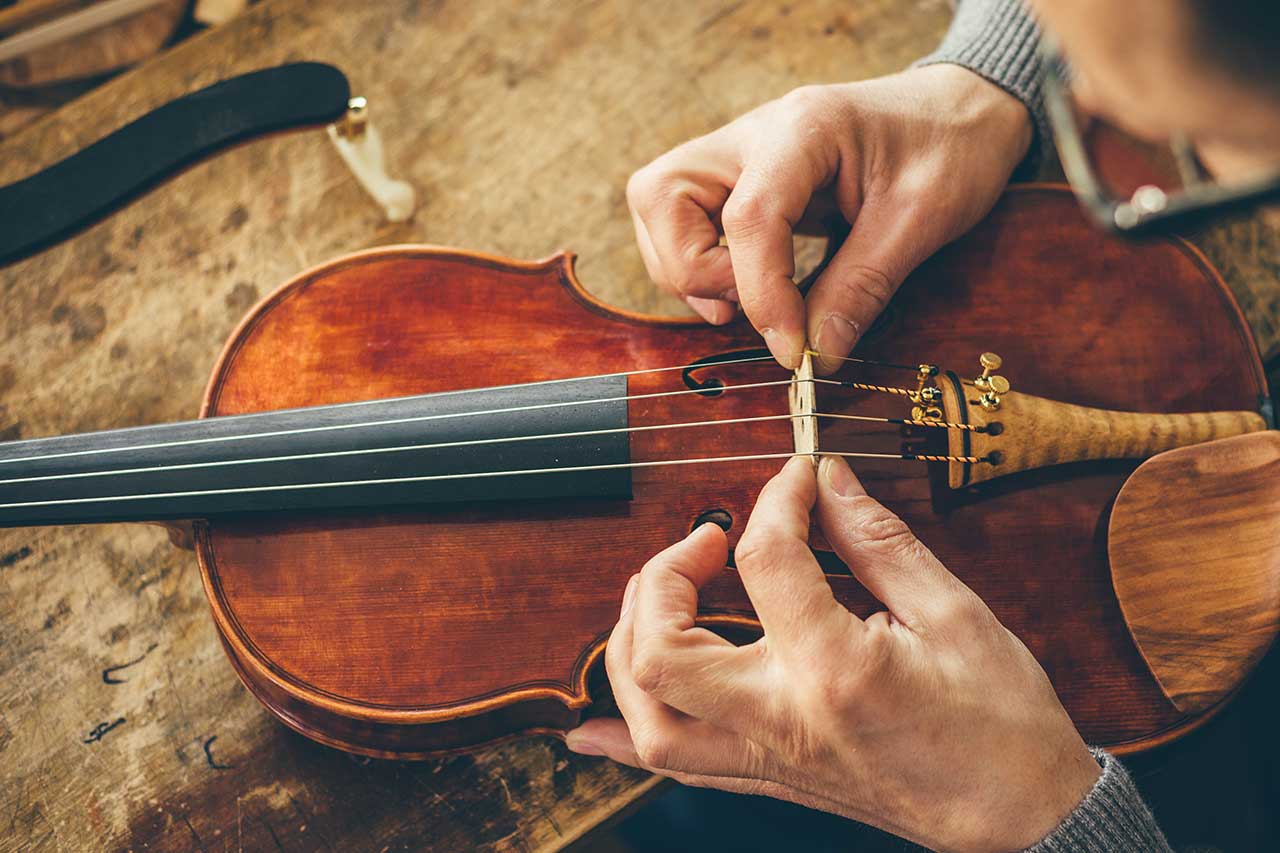
Mastering the basics: A guide to maintaining your luthier instrument – The importance of maintaining your luthier instrument’s electronics and hardware
Maintaining the electronics and hardware of your luthier instrument is just as important as maintaining the wood and strings. The electronics and hardware are the components that allow you to control the volume, tone and other aspects of the sound. Neglecting the maintenance of these components can lead to poor sound quality and even render your instrument unplayable.
One of the most important aspects of maintaining your luthier instrument’s electronics and hardware is to keep them clean. Over time, dust and grime can accumulate on the pickups, potentiometers, and other electronic components, which can affect their performance. To clean these components, you can use a soft brush or compressed air to remove dust and debris. You can also use a mild cleaning solution to remove grime and stains, but be sure to follow the instructions on the label, and use a soft, dry cloth to apply the solution.
Another important aspect of maintaining your luthier instrument’s electronics and hardware is to keep them properly lubricated. The moving parts of the hardware, such as the tuning machines and bridge, need to be lubricated to ensure smooth operation. You can use a small amount of lubricant, such as graphite or a specialized lubricant, to lubricate the moving parts. Be sure to apply the lubricant sparingly and only to the moving parts, and to wipe away any excess lubricant.
Regularly check the battery status of your luthier instrument that uses batteries, replace them if needed and make sure to keep them clean and dry. If you have an active electronic instrument, you must also make sure that the active electronic circuits are clean and free of dust and dirt, to prevent damage to the circuit board.
Another important aspect of maintaining your luthier instrument’s electronics and hardware is to check for any loose or broken parts. Loose or broken parts can affect the performance and sound quality of your instrument. If you notice any loose or broken parts, you should have them repaired or replaced by a professional luthier.
To sum up, maintaining the electronics and hardware of your luthier instrument is just as important as maintaining the wood and strings. Keeping the electronics and hardware clean, properly lubricated, replacing batteries when needed and checking for loose or broken parts can help to ensure that your instrument always sounds and plays its best. Neglecting the maintenance of these components can lead to poor sound quality, and even render your instrument unplayable. It’s important to regularly check and clean the electronic components, lubricate the moving parts of the hardware and check for loose or broken parts. If you notice any issues or have difficulty performing the maintenance yourself, it’s best to seek the help of a professional luthier to ensure that your instrument is always in top condition. By maintaining the electronics and hardware of your luthier instrument, you can enjoy its beautiful sound for many years to come.
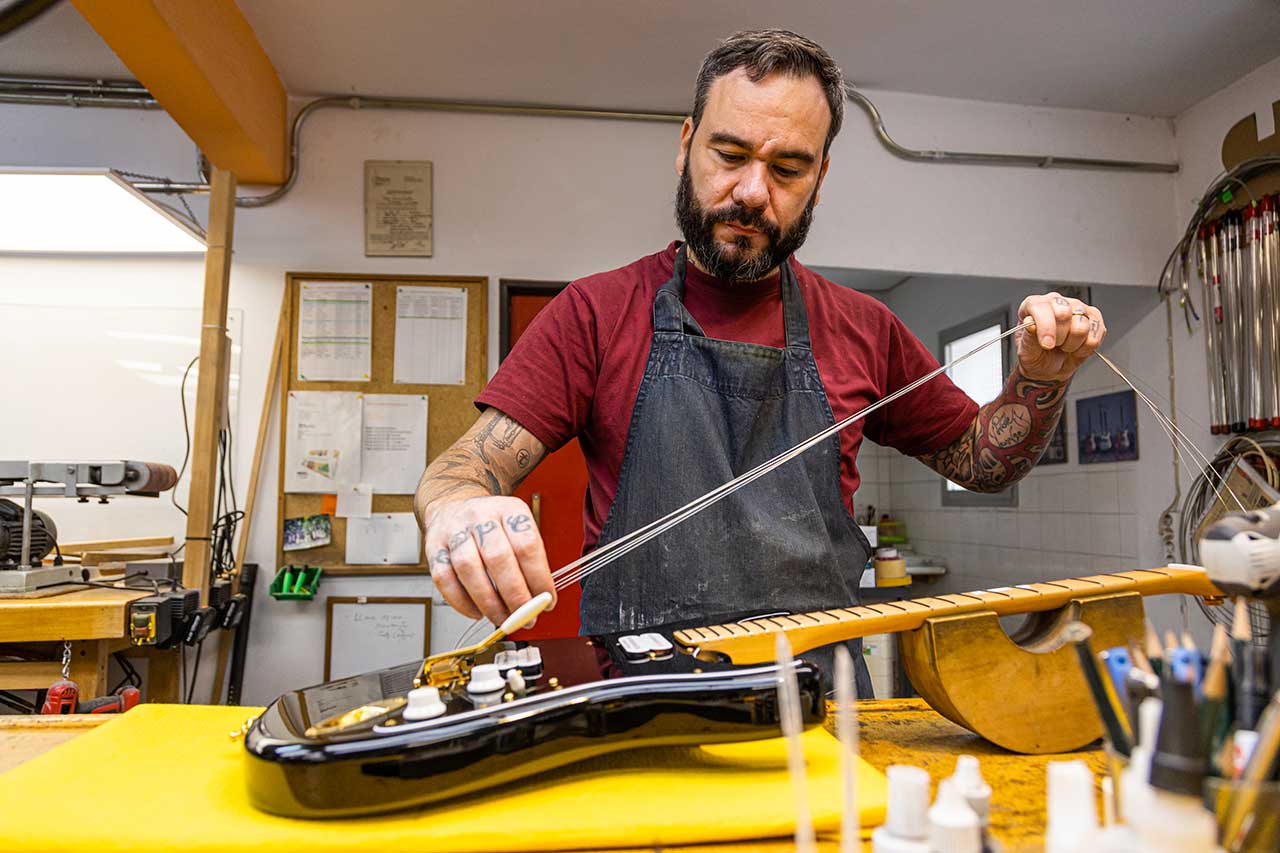
Mastering the basics: A guide to maintaining your luthier instrument
In conclusion, maintaining your luthier instrument is essential for ensuring that it lasts for many years to come. Regular maintenance, proper tuning and string replacement, professional setup, cleaning and caring for the wood, maintaining the right humidity level, proper storage, identifying and fixing common issues, regular inspections by a luthier, understanding when to seek professional help and maintaining the electronics and hardware are all important steps in keeping your luthier instrument in top condition. By mastering the basics of maintaining your luthier instrument, you can ensure that it always sounds and plays its best, and enjoy it for many years to come.
Finally, it’s important to remember that you don’t have to go through the process of maintaining your luthier instrument alone.
The team of skilled luthiers available on Luthiers.com are always ready to help you with any advice or maintenance needs you may have. They are experts in their field and can provide you with the best possible service for your instrument.
Don’t hesitate to contact them directly by using the “Direct message” button on their personal profile page.
They will be more than happy to answer any questions you may have and help you to keep your luthier instrument in top condition.

We can help you find your next luthier instrument!
In the coming weeks, as for others luthiers for plucked string instruments, luthiers for bowed string instruments, luthiers for other instruments, amps & effects makers, wood & supplies dealers, lutherie events, jobs, schools & teachers subscribers on our site, you will be able to follow our series of mini-interviews dedicated to the fascinating world of luthiers.
If you want some fun to discover our luthiers, also take a look and subscribe to our Instagram : @luthierscom and Facebook : @luthierscom accounts.
See you soon…
#luthiers
Subscribe to the newsletter!
Subscribe to our newsletter to follow all our news and those of our luthiers.
If you are passionate about the world of luthiers, join us!
